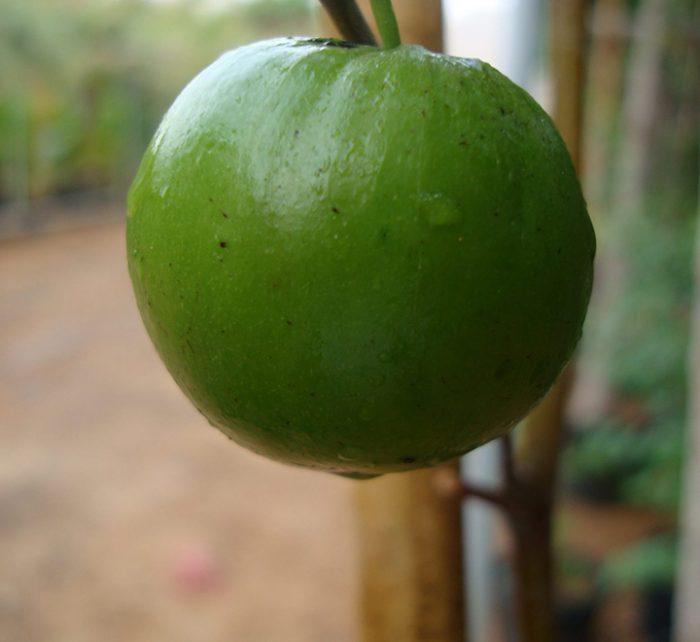Ziziphus jujuba Or Jujube Tree شجرة عناب
Ziziphus jujuba
Ziziphus jujuba or Jujube tree شجرة عناب is a spiny, somewhat pendulous tree with an erect trunk and rough gray bark. Leaves are glossy, bright green with pale underside, oval, with three prominent white veins radiating from their base. Flowers are small, greenish yellow, arranged in clusters, appearing in spring and followed by fleshy, reddish brown, berry-like edible fruits.
- 1.2-1.5m overall height
- Max Height: 5-10m
- Spread: 3-4m
- Origin: Eastern Europe and China
- Family: Rhamnaceae
- Common Name: Common Jujube, Chinese Red Date, Chinese Plum, Chinese Date
- Flower Colour: White
- Drought Tolerance: High
- Salinity Tolerance: High
- Sun Tolerance: High
- Wind Tolerance: High
- Water Requirement: Low
- PH Level: Basic
- Pest Tolerance: High
- Disease Tolerance: High
- Growth Rate: Medium
- Fragrance: No
Deliverable
- Healthy plant in its pot with premium soil
- All the tips and tricks for expert-level care
- Safe arrival guaranteed
Reasons to buy from us
- Guaranteed quality
- Careful handling
- On time delivery
- Support
- Telephone support
- Live chat support
- Trained staff
Related Product: Ziziphus Spina Christi or Sidr Tree
د.إ207.00
Ziziphus jujuba Or Jujube Tree
Introduction
Discover the enchanting world of Ziziphus jujuba, commonly known as the Jujube tree. Originating from Eastern Europe and China, this spiny, pendulous tree boasts an erect trunk and rough gray bark, creating a distinctive presence in any landscape. In this comprehensive guide, we delve into the intricate details of this remarkable tree, exploring its features, benefits, and cultural significance.
The Marvelous Features of Ziziphus Jujuba
Physical Characteristics
The Ziziphus jujuba is a tree that stands at an overall height of 1.2-1.5 meters, with a maximum height reaching an impressive 5-10 meters. Its spread extends to 3-4 meters, creating a captivating presence in gardens and orchards alike. The leaves of this tree are glossy and bright green with a pale underside, showcasing an oval shape adorned with three prominent white veins radiating from their base.
Blossoms and Fruits
During the spring season, small greenish-yellow flowers grace the tree in clusters, providing a visual spectacle. These blooms later transform into fleshy, reddish-brown, berry-like edible fruits, offering both visual appeal and culinary delights. The tree goes by various names, including Common Jujube, Chinese Red Date, Chinese Plum, and Chinese Date, highlighting its diverse cultural associations.
Related Product: Ziziphus Spina Christi or Sidr Tree
Environmental Resilience
Adaptability
Ziziphus jujuba exhibits remarkable resilience to environmental challenges. With high drought tolerance, salinity tolerance, and sun tolerance, this tree is a sturdy addition to gardens in a variety of climates. It can withstand strong winds and requires low water, making it an ideal choice for regions with arid conditions.
Soil and pH Preferences
Thriving in basic pH levels, the Jujube tree prefers soils with a medium growth rate. Its adaptability extends to various soil types, showcasing a high level of pest and disease tolerance. This combination of characteristics makes it an easy-to-maintain and robust option for landscape enthusiasts.
Cultivating Ziziphus Jujuba
Planting and Care Tips
When considering adding Ziziphus jujuba to your garden, ensure proper spacing to accommodate its spread. Planting in well-draining soil enriched with organic matter promotes healthy growth. Regular pruning can help shape the tree and encourage fruit production.
Harvesting and Culinary Uses
The harvest season brings forth the delightful fruits, ready to be enjoyed fresh or dried. Known for their sweet and slightly tart flavor, Jujube fruits are versatile in the kitchen. From jams and jellies to teas and desserts, the culinary possibilities are endless.
The Cultural Significance
Symbolism and Traditions
Beyond its horticultural attributes, Ziziphus jujuba holds cultural significance in various societies. In Chinese tradition, the tree symbolizes good luck and is often associated with festivals and celebrations. The fruits are integral to traditional medicine, known for their potential health benefits.
Conclusion
In conclusion, the Ziziphus jujuba stands as a testament to nature’s wonders, combining aesthetic appeal, resilience, and cultural richness. Whether you are an avid gardener, a culinary enthusiast, or someone seeking a tree with cultural depth, the Jujube tree is a captivating choice. Embrace the beauty and benefits of this remarkable tree in your landscape.
| Dimensions | 1.5 cm |
|---|




